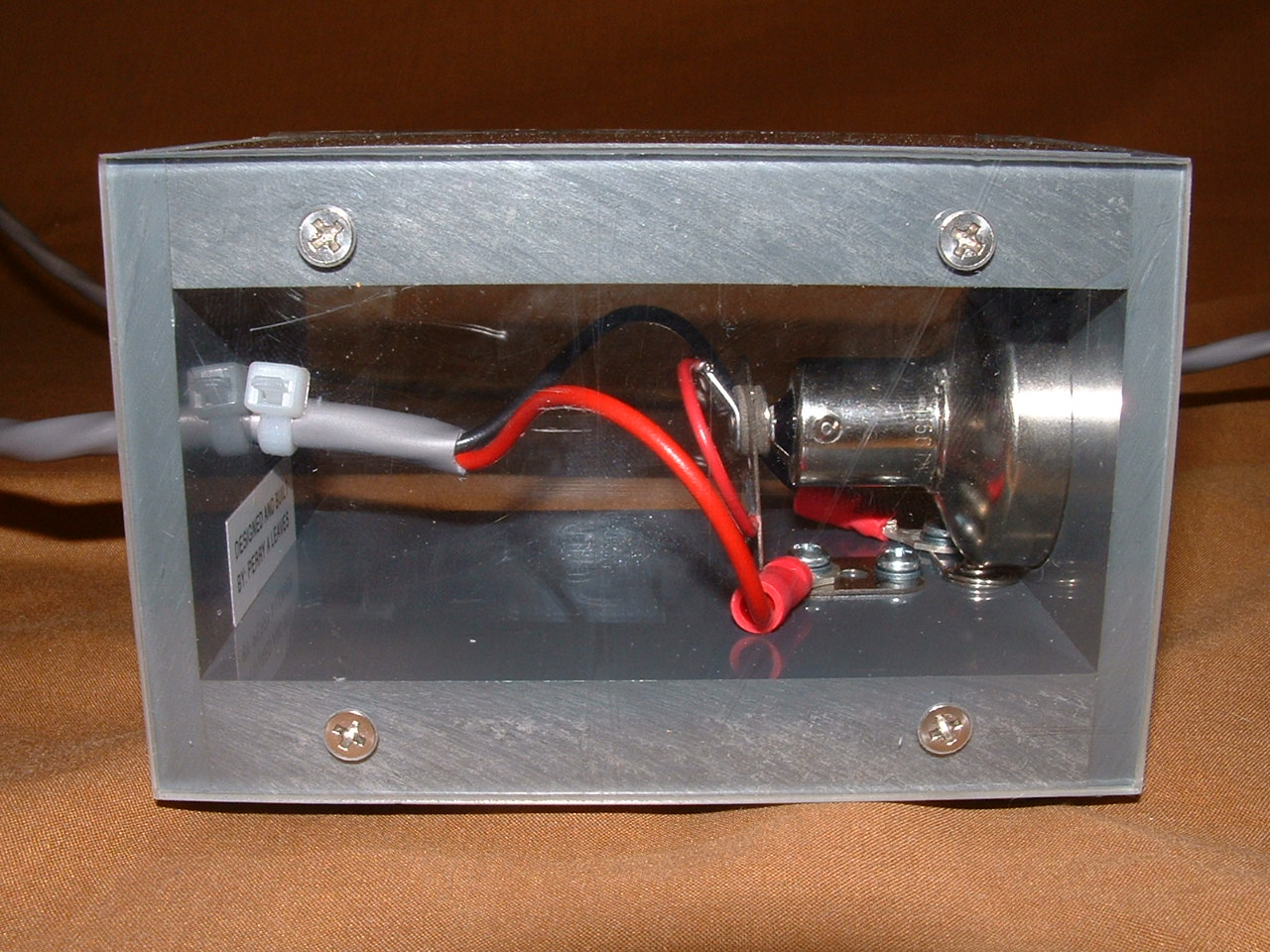Instrumentation Laboratory Project Page
Project: Reaction Rate Flasher
Department: Health and Sport Physical Education
Primary Investigator: Dr. William Berg
Purpose of Project: We have questioned whether current brake lamp systems produce optimal performance in situations requiring rapid responses to avoid rear end collisions because of their failure to optimally capture drivers' attention, particularly in situations where gaze is directed away from the direction of travel. Therefore, the purpose of this study is to test the effect of brake lamp flicker on braking performance.
The apparatus for the experiment consists of a laboratory station designed to simulate the foot activity in driving a vehicle with an automatic transmission. Included are accelerator and brake pedals, positioned identical to those in an automobile. A red (brake) lamp is presented at various eccentricities (angular distance away from the direction of gaze). The apparatus is equipped to measure reaction time and movement time in braking.
Participants sit at the apparatus and engage in a simulated driving task on a computer. Participants release the accelerator as quickly as possible and depress the brake pedal as quickly as possible upon activation of the red lamp. Reaction time and movement time (dependent variables) are recorded in milliseconds. Independent variables include the flicker frequency of the brake lamp (3 levels), and the eccentricity of lamp presentation (3 levels).
IL Comment: Project was designed and built to user's specifications. It is designed to flicker (turn on and off) two bright clusters of red LED's in order to simulate flickering brake lights on automobiles. The instrument will be used as a stimulus when measuring human response times to various flickering patterns. Several different parameters of the flickering can be controlled via the custom electronics.
Cost to researcher: $415.15


